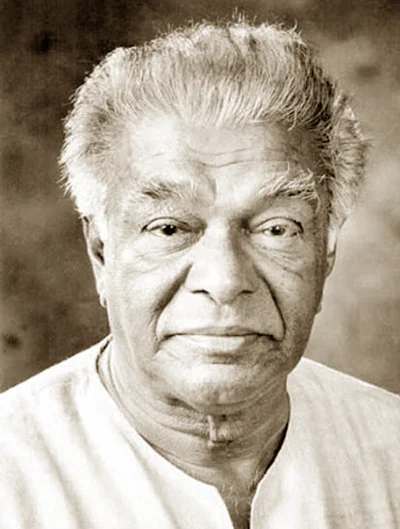Midweek Review
‘Brandix eruption’ close on the heels of Matara corona scare
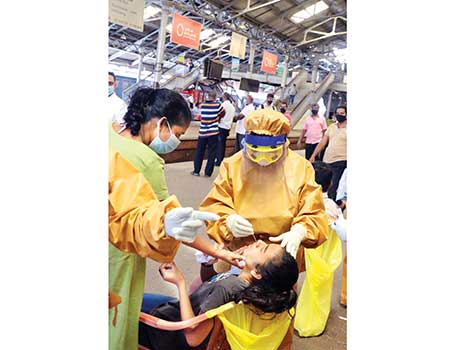
Colombo Municipal Council Public Health Department personnel conducted random PCR tests at the Fort Railway Station, Monday, Oct 12. Pic by Kamal Bogoda
By Shamindra Ferdinando
Over a week before the coronavirus eruption at the Brandix apparel manufacturing facility, in Minuwangoda, a 52-year-old foreigner was tested positive, in Matara. He had been among the crew of an aircraft that arrived at the Mattala airport on Sept 13 and was moving freely, in Matara, before being quarantined at the Amaloh boutique resort, in Polhena, a popular tourist destination, minutes away from the town. The flight had touched down in India before flying to Mattala.
The President of the Public Health Inspectors’ Union of Sri Lanka, Upul Rohana, is on record as having said that local Public Health Inspectors (PHIs) or Medical Officers of Health (MOHs) were not told the crew was to be quarantined at Amaloh hotel. Rohana declared that the crew hadn’t been supervised by any PHI or MOH officers, in the area, since they were sent to the hotel, without alerting the relevant health officials.
The foreigner was tested positive, on Sept. 23, during the required second RT PCR test carried out by health authorities, before the departure of the crew. On arrival, airline crews are tested at the airport before being moved to a private hotel, until they leave. Before the day of their departure, they are subjected to RT PCR tests.
From that group of airline crew, two had taken a three-wheeler to an Arpico supermarket, on Sept 20, and to a Keells Super on or about the same day.
A subsequent RT PCR test, conducted at the Hambantota hospital, hadn’t shown the crew member to be infected with coronavirus. The first test on the foreigner had been carried out by a private hospital.
Although the foreigner had been later cleared, the Matara incident revealed the shortcomings in the system. How did those supposed to be staying indoors visit supermarkets? Did anyone bother to inquire into Public Health Inspectors’ allegations that they weren’t informed of the decision to move the airline crew to Amaloh hotel?
Russian Ambassador in Colombo, Yuri Borissovich Materiy, inquired from the writer about the Matara incident in the wake of the Sept 25th edition of The Island report, headlined ‘Covid-19 scare grips Matara as Russian crew member tests positive’ by Priyan de Silva. With the world battling coronavirus, a relevant foreign mission being interested in even an isolated case is not surprising.
Brandix crisis far worse than
Welisara cluster
The Matara scare was quickly forgotten. The Minuwangoda eruption, within days of that false scare, is continuing to cause quite a crisis. It is certainly far worse than what was called the Welisara Navy cluster that threatened to overwhelm the system during the first corona wave. While 950 officers and men, attached to the Welisara base, had been infected with the highly contagious virus, during a period of six weeks, beginning the third week of April 2020, the Brandix cluster has so far infected more than 1,200 within a week. The Gampaha hospital made the first detection on Oct 2 as a result of a routine RT PCR test done on 39-year-old supervisor, Pradeepa Sudarshini Ratnayake, when she was leaving the hospital. The mother of four was faulted for the crisis though quickly health authorities established the truth. She was not the first Brandix employee infected.
Health Minister Pavitra Wanniarachchi, on Oct 4, told the media that the Brandix employee, tested positive at the Gampaha hospital, had been detected, thanks to a decision to test persons with fever/fever symptoms randomly at government hospitals. The government on Oct 4 imposed curfew in the Minuwangoda and Divulapitiya (Bomugammana) police areas, where the Brandix employee resides.
Later, it was revealed she had received medical treatment at a dispensary, near her home, at Bomugammana, on Sept. 28, after she fell ill at the factory. In an interview with Mawbima (Oct 11, 2020 edition) over the phone, the woman, who had been with Brandix for nine years, maintained over a dozen workers, attached to her section, fell sick on Sept 19-20 before she too got affected, a couple of days later. Those attached to her section, CM 23, had received treatment at the medical centre at Brandix before Pradeepa, too, received treatment at the same medical centre, on Sept. 27. On the following day, she received medical treatment at a dispensary, near her home. Mawbima quoted her as having said that in spite of the developing situation within the facility, none of them were directed to a government hospital until she demanded that she be taken to Gampaha, on September 30. She had even worked on September 30 though she was receiving treatment.
She was taken from the Brandix facility, to Gampaha hospital, on September 30, and released from hospital on the following day. By then, a substantial number of workers had been affected. Brandix, in its first statement, issued on Oct 4, placed the number of affected at 45, in addition to the person first tested positive. It meant at the time the first detection was made there were at least 45 others affected, within the facility.
Authorities haven’t been able yet to establish how the coronavirus eruption took place in Brandix. For nearly two weeks, the cause of the Brandix eruption remains a mystery. The Brandix eruption delivered a massive blow to the country’s struggling economy.
The Brandix crisis will further undermine Sri Lanka’s economy. There is no dispute over the contribution made by Brandix over the years to the national economy.
Indian HC, Brandix respond
to accusations
The writer, on Oct 7, morning raised growing accusations, with the Indian High Commission in Colombo, that Indian workers, employed by Brandix, at its Minuwangoda manufacturing facility, caused the crisis.
The Island asked whether the IHC had been aware of the number of Indian workers at Minuwangoda and whether they had arrived there this year. The IHC spokesperson, Neha Singh, said: “As far as our understanding goes all international arrivals are subjected to health protocols and procedures stipulated by the government of Sri Lanka in view of the Covid-19 pandemic. Any question in this regard may be directed to concerned authorities.”
Due to the rapid deterioration of the situation, police headquarters on Oct 7 extended the curfew to over a dozen police areas in the Gampaha administrative district. The police brought Ganemulla, Kiridiwela,
Dompe, Malwathuhiripitiya, Mirigama, Nittambuwa, Pugoda, Weeragula, Weliweriya, Pallewala, Yakkala, Kandana, Ja–Ela and Seeduwa under curfew, in addition to the curfew imposed on Minuwangoda and Divulapitiya.
Brandix issued its first statement, as regards the corona attack, on Oct 4. The statement, headlined ‘Early detection of COVID-19 positive patient at Brandix facility in Minuwangoda declared: “The rigorous protocol implemented across Brandix, and the immediate response and support received from the PHI and relevant health authorities of Sri Lanka enabled the early detection of the patient, ensuring her timely transfer to IDH for immediate treatment and mitigation of any further spread of the virus.”
At the time of the issuance of the first statement, the number of Brandix affected was placed at 45, in addition to the first detected.
The media received the second Brandix statement on Oct 6. The company said that 1,394 Brandix employees at its Minuwangoda facility had been tested by Oct 5 and of them 567 confirmed as corona positive.
Three chartered flights,
341 persons return
The writer raised continuing concerns as regards developments at the Minuwangoda facility with Assad Omar, of Brandix, on Oct 7. Omar responded to issues raised by The Island while assuring a comprehensive statement would be issued during the day. It dealt with a number of issues, including accusations regarding the arrival of Indians, at the Brandix facility at Minuwangoda, in the run-up to the devastating corona eruption. Brandix denied allegations that foreigners, including Indians, had been to its Minuwangoda facility, under any circumstances. Brandix also denied claims that fabric, required by Brandix, had been brought from India, or accepted orders from its facility in India.
As regards those Sri Lankans employed in the Brandix facility, at Visakhapatnam, Andhara Pradesh, and their families returning to Sri Lanka in the recent past, the leading apparel manufacturer revealed that there had been three chartered flights from Visakhapatnam. Brandix assured all of them followed government stipulated procedures, including RT PCR testing and a 14-day mandatory quarantine at a government regulated quarantine facility, as well as the 14-day self-quarantine process, supervised by respective PHIs. Brandix further emphasized that none of those, who had returned from Andhra Pradesh, visited the Minuwangoda manufacturing facility.
The writer sought clarification from Brandix, on Oct 11, regarding a number of issues. The Island submitted the following questions to Brandix: “We received three media statements from you regarding the Covid-19 eruption. In the third statement, you mentioned the arrival of three flights from India carrying Sri Lankans and their families. Can you please provide (1) the dates flights arrived at the Mattala airport (2) the number of passengers on each flight (3) where were they quarantined for two weeks and (4) who supervised the remaining 14-day self-quarantine period? Brandix, in a statement issued the same day, while reiterating all protocols were followed, revealed that altogether 341 Sri Lankans, both workers and their families, returned on three chartered flights on June 25, August 8 and Sept.22. The flight that is causing a puzzle is UL 1159 that was expected to bring in 60 persons though only 48 arrived aboard it.
Brandix, in its fourth statement, said: “Upon completion of the 14-day mandatory period at a government regulated quarantine facility, a certification, signed by the Head of the National Operation Centre for Prevention of COVID-19 and the Director General of Health Services has been issued to each individual confirming the same. The passengers of the first two flights then underwent the 14-day self-quarantine process under the supervision of the respective PHIs. A certificate confirming the completion of the self-quarantine process has been issued to each passenger of these two flights by the Office of the Medical Officer of Health for the respective area, which is signed off by the respective Public Health Inspector and the Medical Officer of Health. The 48 passengers that travelled to Sri Lanka on 22nd September 2020 are currently undergoing the 14-day self-quarantine process, under the supervision of the respective PHIs, and will be issued the same certificate upon completion of the process. The certificates regarding all passengers can be produced for verification to any Government authority investigating the matter.”
Brandix also said that the company continues to operate a quarantine centre provided by them in Punani, Batticaloa, during the COVID-19 outbreak earlier this year, which also presently houses employees, family members, and any others affected.
However, when Chathura Alwis interviewed Lt. Gen. Shavendra Silva, who heads the National Operation Centre for the Prevention of Covid-19 Outbreak (NOCPCO), the Derana anchor said that the third contingent was accommodated at Sheraton hotel, Waskaduwa, where Durdens Hospital staff subjected them to RT PCR. Lt. Gen. Silva pointed out that contrary to reports that 60 returned on the Sept 22 flight, there were only 48. Did those who returned on June 25 and Aug 8, too, stay at Sheraton? Wouldn’t it be relevant to ask whether any of those who had returned from India were accommodated at the Punani facility before the corona eruption?
Perhaps, the most important line in the fourth Brandix statement is the following. The relevant section verbatim: “We are also thoroughly investigating any lapses in this regard and will share our learning and take the necessary action in the event of any violation.”
Subsequently, Brandix told The Island on Oct 12 (Monday) that those who had returned from India (three contingents) were accommodated at Sheraton Hotel, Kosgoda, and TI, Wadduwa, Long Beach Hotel, Koggala, and again Sheraton Hotel, Kosgoda, respectively.
Welisara Navy cluster
The second, far worse wave couldn’t have happened at a worse time for Sri Lanka, struggling to cope up with the unprecedented economic fallout. The government, too, should inquire into possible lapses on its part in line with overall measures meant to prevent further outbreaks. The Welisara corona cluster was caused by congestion, within the Navy base there, though it was conveniently blamed on heroin addicts of Suduwella. Those responsible suppressed severe congestion within the vital base that compelled the Navy to evacuate the base in the third week of May 2020, a month after the detection of the first infected sailor. Well over 2,000 officers and men had to be shifted to bases in various parts of the country, including the north. This was done in terms of instructions issued by the health authorities.
President Gotabaya Rajapaksa categorized the Welisara cluster as a mistake when he addressed a group of officials. The coronavirus outbreak revealed the pathetic situation, within the base, where sailors were denied even basic facilities. They lacked sufficient bathroom and toilet facilities in addition to proper sleeping quarters. Even today, residents of Suduwella are blamed for what befell on the Welisara Navy base.
Against the backdrop of the recent Brandix eruption, some of those who had been accommodated at the Welisara Navy base were moved to other bases.
Indian poaching, smuggling
across Palk Straits
In spite of regular naval patrols, smuggling continues across the Palk Straits. Contacts between the Indians and Sri Lankan smugglers posed quite a threat against the backdrop of India reeling from corona cases. With over 7 mn cases reported so far, and the death toll at 109,150, by Oct 12, India is really struggling to bring the situation under control. Globally, the infections topped 37.3 million. Sri Lanka also placed some restrictions on its fishing community to prevent contacts with the Indians.
Fisheries Minister Douglas Devananda announced restrictions following discussions at cabinet level, in this regard. The Navy continues to make regular detections in the seas off the northwestern province and northern districts. During recent talks between Indian leader Modi and Sri Lankan Premier Mahinda Rajapaksa, the contentious issue of Indian poaching, too, has been taken up.
Amidst the corona crisis, a high level Chinese visit took place with the main Opposition Samagi Jana Balavegaya (SJB) questioning the corona counter measures in place to check the visiting delegation. China provided some much needed relief with additional loans though the Sri Lanka economy remained at a critical point due to serious difficulties in meeting the country’s financial obligations. The Brandix eruption caused further deterioration, rather rapidly, with no end in sight. By Monday, Oct 12, the police had no option but to further expand restrictions as more cases were reported from various districts. Police headquarters placed several villages in Gampaha and Mannar under lockdown conditions. The crisis could have been avoided if basic protocols were followed. Brandix facility at Minuwangoda owed an explanation as regards the claim that workers began to fall sick as early as Sept. 19 -20 and Pradeepa Sudarshini Ratnayake received medical treatment on Sept. 27 within the factory premises. Explanation is also required whether those who had fallen sick reported to work from September 19-20 to Oct 4, when the government declared curfew in Minuwangoda and Divulapitiya areas, over 24 hours after Pradeepa Sudarshini Ratnayake was tested positive. If authorities talked to Pradeepa Sudarshini Ratnayake, 45 other workers tested positive (first Brandix statement issued on Oct 4) as well as the person in charge of the Brandix medical centre, they can easily establish when workers first complained of difficulties. When did Brandix Minuwangoda bring the situation to the notice of the MoH and PHIs? If supervisor Pradeepa Sudarshini Ratnayake’s still undisputed assertion that workers, in her section, fell sick on Sept 19-20, how can the failure on the part of those responsible to bring it, immediately to the notice of, health authorities be explained. According to Pradeepa Sudarshini Ratnayake even on Oct 30 she was taken to Gampaha hospital on her insistence.
Army Commander Lt. Gen. Shavendra Silva, who is also the Chief of Defence Staff (CDS), confirmed Pradeepa Sudarshini Ratnayake’s assertion that workers showed symptoms about a week before she was affected by it.
Appearing on Derana ‘360’, Monday night, the Army Chief told anchor Dilka Samanmali that about 10 workers had been infected before a worker was tested positive at the Gampaha hospital. Lt. Gen. Silva said that even if they disregarded a worker showing symptoms on Sept 15, now it was clear infections took place between Sept 10 and 20 with several cases reported on 20th. The Army Chief’s declaration brought to an end the despicable attempt made by some interested parties to blame the corona eruption on Pradeepa Sudarshini Ratnayake, on the basis of her having an illicit affair.
The primary question, the government needs a clear answer is exactly when the workers complained of fever and showed other symptoms? The answer will establish the culpability of those responsible for the devastating corona eruption.
Midweek Review
How Prof. Dewasiri’s FB post brought about Speaker Ranwala’s exit
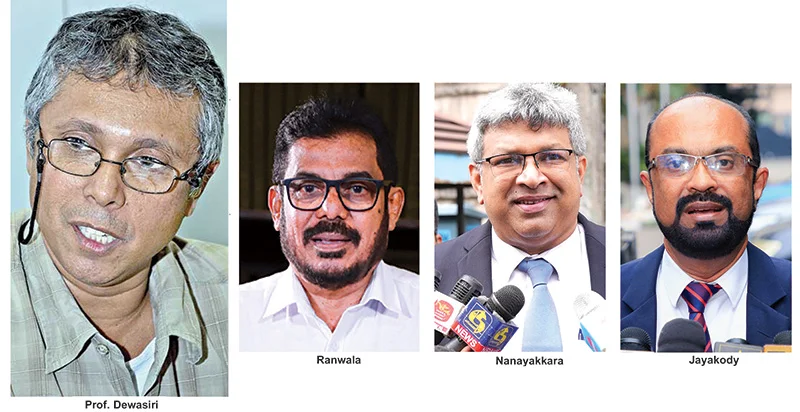
By Shamindra Ferdinando
Prof. Nirmal Ranjith Dewasiri was the first to question the National People’s Power government over Speaker ‘Dr.’ Asoka Sapumal Ranwala regarding his academic qualifications.
Dewasiri’s shock query caught the NPP by surprise. The academic questioned the government on his social media account on 05 Dec. The Parliament unanimously appointed Ranwala as Speaker of the Tenth Parliament on 21 Nov.
Dewasiri demanded that the government compel Speaker Ranwala to resign in case the parliamentarian deliberately provided false information. If the Speaker declined to do so, appropriate measures should be taken to remove him, Prof. Dewasiri declared, while finding fault with the new entrant for (i) falsely claiming to have a degree and (ii) believe he could hold such an important position regardless of the deceit perpetrated by him.
Prof. Dewasiri emphasized that the second fault was far worse than the first. One-time spokesperson for the Federation of University Teachers Association (FUTA) and advocate of the Yahapalana administration warned the government of far reaching consequences as it was badly exposed.
The government obviously didn’t take Prof. Dewasiri’s social media post seriously. Perhaps the top leadership felt that the issue at hand wouldn’t attract much public attention. However, the Opposition, both in Parliament and outside, launched an all-out attack.
The SJB declared its intention to move a no-confidence motion against the Speaker. In spite of the NPP having an unprecedented 2/3 majority in Parliament, the ruling party feared to face the Opposition move. The NPP could have easily routed the combined Opposition in Parliament, but to defend an obvious wrongdoer would have ruined President Anura Kumara Dissanayake’s (AKD) parliamentary group as they came to power, less than three months ago, promising to correct all the shenanigans that had been going on in the country, under the guise of democracy, since independence.
Beleaguered AKD had no option but to ask Speaker Ranwala to step down. The NPP could have avoided a lot of flak if the party acted immediately after Prof. Dewasiri’s disclosure. If not for the intervention made by the academic and a vociferous critic of wrongs done by the previous regimes, particularly to academics, Ranwala would still have been the Speaker.
The utterly dispirited SJB wouldn’t have inquired into Ranwala’s credentials under any circumstances. Thanks to Prof. Dewasiri, the Opposition received a mega opportunity to question the very basis of the NPP’s presidential and parliamentary election campaigns.
The SJB and new Democratic Front (NDF) had been rejected by the electorate to such an extent, even if they challenged Ranwala over his educational qualifications, the people may have ignored the issue as the rantings of a frustrated Opposition still licking the wounds of their routing at the polls. Prof. Dewasiri’s disclosure obviously delivered a knockout blow to the government.
Ranwala resigned on 13 Dec., just over a week after Prof. Dewasiri’s bombshell revelation. It would be pertinent to mention that just before the announcemnt of the Speaker’s resignation, President AKD told government media bosses that he wouldn’t protect any wrongdoer.
Having asked the electorate to reject unscrupulous political parties that had ruined the country, the NPP couldn’t have risked its political project to save Ranwala, one-time President of the Ceylon Petroleum Common Workers’ Union, until he was sent on compulsory retirement in March 2023 by the then Minister of Power and Energy Kanchana Wijesekera. The Wickremesinghe-Rajapaksa government accused Ranwala of obstructing fuel distribution services.
The NPP couldn’t have been unaware of Ranwala’s bogus claim. If Ranwala deliberately deceived the NPP, he should be dealt with harshly. Perhaps Ranwala should be asked to resign his parliamentary seat forthwith for deceiving the whole country, to pave the way for the NPP to fill that Gampaha District vacancy thereafter. Having vowed to clean up Parliament, the NPP cannot, under any circumstances, protect any wrongdoer.
But, corrupt political parties shouldn’t think for a moment that they can capitalize on the Speaker’s issue. The people rejected the SJB, NDF and SLPP (Sri Lanka Podujana Peramuna) twice this year as they earned the wrath of the people. It would be a grave fault on their part if they believed Ranwala’s ouster could strengthen their campaign against the government.
The NPP should, without delay, set the record straight. The issue is whether Ranwala deceived the NPP with regard to his doctorate, or the party knew all along that their CPC trade unionist didn’t have the academic qualification which he proudly flaunted.
House tricked
Premier Dr. Harini Amarasuriya and Foreign Minister Vijitha Herath, together, accompanied Ranwela to the Speaker’s chair. The Opposition accepted the appointment. The Premier proposed Ranwala, while Minister Herath seconded that proposal.
Premier Amarasuriya, Opposition Leader Sajith Premadasa, and Leader of the Sri Lanka Muslim Congress Rauff Hakeem congratulated National Executive Committee member Ranwala on that occasion.
One-time member of the Biyagama Local government body, Ranwala twice represented the JVP in the Western Provincial Council. According to Parliament website, Ranwala holds a degree in Chemical Engineering from the University of Moratuwa and a doctorate in Biochemistry from Waseda University, Japan.
To make matters worse for the NPP, the Opposition challenged Deputy Speaker Dr. Rizvie Salih’s specialist tag. Salih answered his critics. His FB post explained his nearly 40-year career, with 12 years with the public sector, though he is not a specialist.
The Deputy Speaker told Parliament, on Tuesday, that he is not a specialist and never used the title in his official letterheads, visiting cards and prescriptions. ” I have categorically told that I should not be called a specialist in propaganda material during elections,” he said. In other words, he had found fault with those who handled the propaganda campaign for the NPP
Interested parties also challenged the doctorate of Justice Minister Harshana Nanayakkara, another first time entrant to Parliament.
The controversy over Nanayakkara’s doctorate took an unexpected turn when the Parliament claimed that the doctorate had been inadvertently mentioned by Parliament. Let me reproduce the clarification issued by M. Jayalath Perera, Director Legislative Services / Director Communication (Acting), Parliament: Clarification Regarding the Title of “Dr.” mentioned before the name of the Minister of Justice, Attorney-at-Law, Hon. Harshana Nanayakkara, on the Parliament website.
“I would like to emphasize the following points in relation to reports published in the media regarding the title of ‘’Dr.’’ mentioned before the name of the Minister of Justice and National Integration, Attorney-at-Law, Harshana Nanayakkara, in the directory of Members of Parliament on the Parliament website.
“It is important to note that Hon. Harshana Nanayakkara has not indicated holding a doctoral degree in the information provided to Parliament. The appearance of the title “Dr.” before the Minister’s name was a result of an error in entering the relevant data. Accordingly, steps have been taken to rectify this mistake.
“I express my deepest regret for the inconvenience caused to the Minister of Justice and National Integration, Attorney-at-Law, Hon. Harshana Nanayakkara, in this regard.
“Also, the process of re-checking and updating the information of all Members of Parliament on the Parliament website is currently underway.”
But those who cannot stomach the NPP’s victory ask why didn’t Nanayakkara get that corrected himself if he was not entitled to be called “Dr.”? However, the Justice Minister lodged a complaint with the CID on Monday (16). The investigation can help ascertain whether some interested party conspired to discredit the NPP.
That clarification issued by Parliament meant that Ranwala provided false information to Parliament. According to Jayalath Perera, the parliamentary staff entered the relevant data provided by lawmakers, hence the only mistake on their part pertained to the Justice Minister’s data.
Power Minister Kumara Jayakody, too, lodged a complaint with police seeking an investigation into what he called an organized attempt to discredit him by challenging his academic qualifications. Both Nanayakkara and Jayakody speculated about the possibility of those who had been rejected by the people and their associates and supporters being involved in the high profile campaign.
The NPP cannot afford to disappoint 5.7 mn people who voted for AKD at the presidential election and 6.8 mn at the general election. The NPP increased its voter tally from 5.7 mn to 6.8 mn within a couple of weeks whereas the SJB was reduced to 1.9 mn votes from 4.3 mn at the presidential poll. The NDF was reduced to just 500,000 votes from 2.2mn at the presidential election while the SLPP increased its tally from 340,000 to 350,000. The Opposition is in disarray and in a pathetic situation.
Ranwala’s fiasco has sort of given the Opposition false hopes of a quick comeback. The forthcoming local government polls will show the ground situation. The NPP must keep in mind that in addition to the Ranwala affair, the failure on its part to provide sufficient relief to fuel and electricity consumers as promised has caused much public anger. Having repeatedly alleged that the previous government couldn’t substantially reduce fuel prices as the then Minister Kanchana Wijesekera pocketed the money, and having made those claims against the previous Minister in charge of the subject, the NPP brought down the price of a litre of Octane 92 by just 2 rupees much to the public’s resentment.
The pathetic handling of the rice mafia, too, didn’t do the NPP any good. Throughout the polls campaigns, the NPP repeatedly assured that the rice mafia would be appropriately dealt with and prices brought down and stabilized. The NPP also promised that rice wouldn’t be imported at all though imports would meet the tourist sector requirement. That much touted promise, too, was broken. However, the electorate, the writer is certain, doesn’t see any point in once again pinning their hopes on the utterly corrupt and dishonest lot rejected at the presidential and parliamentary polls.
Why Parliament shouldn’t defend wrongdoers
During the general election campaign, AKD explained why Parliament shouldn’t protect wrongdoers. The President said that the Yahapalana Parliament (2015-2019), during Karu Jayasuriya’s tenure as the Speaker, defeated a no-confidence motion moved against Ravi Karunanayake over the Treasury bond scams, especially after he told the Presidential Commission of Inquiry that probed it, he could not remember the person who gave him a luxury penthouse at Kollupitiya. Then in 2023 the Wickremesinghe-Rajapaksa government defended Keheliya Rambukwella when a no-faith motion was moved against him over corruption in the health sector procurement, the President said.
Having said so, AKD couldn’t have defended Ranwala in case the SJB handed over a no-confidence motion against him. In fact, the NPP has created an environment that may prevent those exercising political power from coming to the rescue of wrongdoers under any circumstances.
During Ranwala’s very short stint as the Speaker, he had the opportunity to receive several foreign dignitaries. Press releases issued by Parliament following those meetings referred to Ranwala as Dr. Ranwala.
South Korean Ambassador Miyon Lee paid a courtesy call on Speaker Ranwala on 04 Dec. at the Parliament complex. Secretary General of the Parliament Mrs. Kushani Rohanadeera, was also present on the occasion. This happened the day before Prof. Dewasiri exposed the NPP parliamentarian.
Ranwala, not aware of what was coming, addressed the newly elected members on 25 Nov., in Parliament, where he emphasized the responsibility on the part of newcomers (he, too, was a newcomer struggling to handle responsibilities for want of parliamentary experience) to familiarize with parliamentary procedures. Speaker Ranwala said that public expectations couldn’t be met unless they learnt about parliamentary procedures. Ranwala was addressing the inaugural session of the orientation programme for lawmakers.
The Parliament website quoted Speaker Ranwala as having emphasized the importance of organizing such workshops, noting that a thorough understanding of parliamentary traditions, constitutional frameworks, standing orders, and related parliamentary procedures is crucial for serving the people through the diverse debates conducted within Parliament.
Chinese Ambassador in Colombo Ambassador Qi Zhenhong was the first envoy to pay a courtesy call on Ranwala at the Parliament. The Chinese Ambassador conveyed the greetings of the Chairman of the Standing Committee of the National People’s Congress of the People’s Republic of China (Speaker of the Parliament of the People’s Republic of China) Zhao Leji, to the newly elected Speaker of the Tenth Parliament during the meeting.
The Chinese envoy was followed by Indian High Commissioner Santosh Jha. Jha paid a courtesy call on the Speaker on 28 Nov. at the Parliament.
The United Nations Resident Coordinator in Sri Lanka, Marc-André Franche, met Speaker Ranwala on 04 Dec.
In the wake of Prof. Dewasiri’s shocking disclosure, Speaker Ranwala received a high-level US delegation led by Assistant Secretary of State for the Bureau of South and Central Asian Affairs Donald Lu. The meeting took place on 06 Dec.
The delegation included Ms. Anjali Kaur, Deputy Assistant Administrator of the Bureau for Asia at USAID, and Mr. Robert Kaproth, Deputy Assistant Secretary for Asia at the US Department of the Treasury.
According to a press release issued by Parliament the meeting focused on Sri Lanka’s reform priorities and the critical role of the House in advancing the people’s mandate for accountability, transparency, and inclusive governance.
Ambassador of the United Arab Emirates to Sri Lanka Khaled Nasser AlAmeri was the next to pay a courtesy call on Speaker Ranwala. That meeting took place on 09 Dec. amidst a stepped-up campaign against Speaker Ranwala. The NPP seems to have operated on the premise that the controversy over the Speaker’s credentials would gradually fade away. But, the media pressed the Cabinet spokesperson Dr. Nalinda Jayatissa over the simmering serious issue. That controversy sort of overwhelmed the NPP that worked so hard to portray all other political parties, other than them, as corrupt to the core.
In fact, the NPP had nothing else but to depend on what it called a new clean political culture. Having impressed the electorate with nothing but promises and assurances that it would do the right thing, it couldn’t have a blatant liar as the Speaker.
If not for the political culture that had been introduced by the NPP, in the wake of Aragalaya in 2022, the false declaration made by Ranwala wouldn’t have been an issue at all. The people would have simply accepted it as just another lie. Our inefficient and useless Parliament had been so disgraceful in its conduct and encouraged public resentment that a Speaker’s false claim wouldn’t have caused a public furore.
The NPP’s failed bid to storm Parliament during the final push against President Gotabaya Rajapaksa should be examined taking into consideration the pathetic state of our Parliament. Some of those unscrupulous men who represented Parliament over the past two to three decades brought about the Parliament’s collapse. Instead of taking remedial measures, political parties allowed the deterioration to continue, unabated. Nothing can be as ridiculous as conducting student parliaments all over the provinces. What the Parliament really expected to achieve by promoting student parliaments at a time the very basis of the parliamentary system is under threat due to overall failure of the political party system.
Parliament must take appropriate measures to restore public confidence in the highest institution in the country. Ranwala’s affair proved beyond doubt that the Speaker, who is also the Chairman of the Constitutional Council, could manipulate the system. No one and no political party should be above the law. War-winning Sri Lanka had suffered unbearable losses for want of proper parliamentary control over public finance over the years.
Let us hope the NPP has learnt a hard lesson at the onset of AKD’s five-year term that would help the party to navigate choppy waters. The daunting challenges faced by a bankrupt country should prompt all political parties, represented in Parliament, to reach consensus on Sri Lanka’s response to the deal with the IMF, signed by Ranil Wickremesinghe. The issue the Parliament must grapple with is how to transform the sick national economy to make it possible for us to start repaying foreign debt in 2028 without making most of us absolute paupers, but many Lankans are already in dire straits economically.
The Parliament can begin by making the Supreme Court judgment on the economic crisis that led to Gotabaya Rajapaksa’s removal available to new members of Parliament. Of the 225 MPs, 162 are new entrants. The Supreme Court in Nov. 2023 issued a symbolic ruling that Rajapaksa brothers – including two ex-Presidents – were guilty of triggering the worst financial crisis by mishandling the economy.
In a majority verdict on multiple petitions filed by academics and civil rights activists, a five-judge bench of the Supreme Court ruled that the respondents, who all later resigned or were sacked, had violated public trust. But that verdict should be examined along with massive foreign loans taken by the Yahapalana government during the 2015-2019 period at high interests that contributed massively to the crisis.
Let there be no holds barred examination of the economic crisis and exposure of all responsible, regardless of their status. However, that wouldn’t be a reality unless the legislature fulfils its basic obligations in terms of the Constitution.
Let us also not lose sight of hidden hands, especially from the West who make matters worse through their cloak and dagger operations worldwide as also was put into operation here during Gotabaya Rajapaksa presidency, like even cutting off worker remittances from our banking system thereby we couldn’t even scrape together a few million dollars to clear even a shipment of cooking gas. They have done similar jugglery to so many other countries, even in our neighbourhood, as has been the case already in Bangladesh and Pakistan. Modi should not feel all that smug as we do not know what plots are being hatched against him.
Remember the uncompromising Aragalaya activists who were threatening to die for a system change in the country, but disappeared into thin air no sooner Ranil Wickremesimnghe was installed in the seat of power with the ouster of Gotabaya Rajapaksa by extra parliamentary means.
Midweek Review
Seeking cultural transmission between bodies
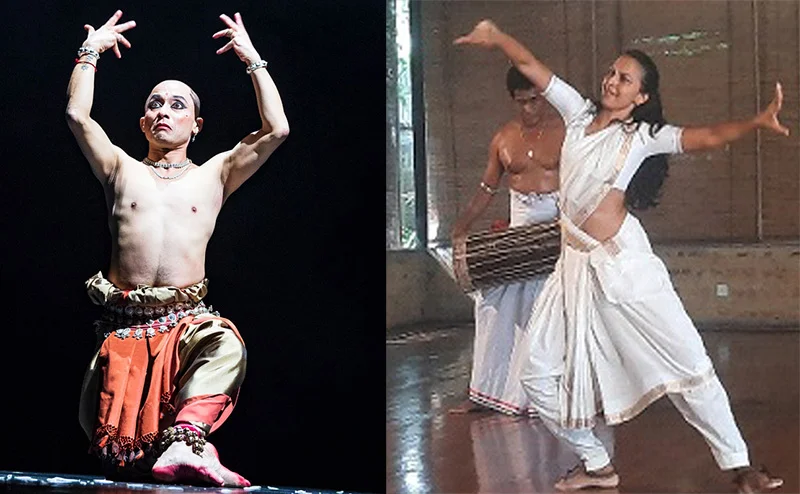
From Chitrasena to Akram Khan:
by Saumya Liyanage
Akram Khan is a world-renowned dancer, choreographer and the founder of Akram Khan Company (AKC) in the UK. He has been an impactful dancer and choreographer who was initially trained as a Kathak dancer during his apprenticeship under various Kathak Gurus in Asia and elsewhere. He and his dance company have created numerous dance productions that surpass the traditional boundaries. Akram Khan is a recipient of top awards including two Laurence Olivier Awards, the Bessie Award (New York Dance and Performance Award), the prestigious ISPA (International Society for the Performing Arts) Distinguished Artist Award, the Fred and Adele Astaire Award, the Herald Archangel Award at the Edinburgh International Festival, the South Bank Sky Arts Award, and ten Critics’ Circle National Dance Awards for his company.
With the initiative of the British Council in Colombo, the Akram Khan Dance Company contacted me a few months ago. The Legacy International Project Manager of the AKC, Varsha Kumar sent me an email informing me of an exciting project the dance company wanted to initiate in Jaffna. It was an upcoming collaboration between Akram Khan Company supported by the British Council Colombo to conduct an intense dance exchange workshop. This initiative facilitated a five-day intensive cultural transmission of Bharatanatyam dance conducted by Mavin Khoo, the artistic associate of the Akram Khan Company with a selected group of youth from Jaffna.
The idea was to continue and sustain the traditional dance forms and explore how they could be sustained and continued further through innovative practices. Mavin Khoo visited Jaffna for the first time to initiate this cultural transmission project with the hope of conducting this intense workshop on Bharatanatyam. Mavin Khoo, trained as a traditional dancer in Bharatanatyam in Malaysia, is a choreographer and the creative collaborator of Akram Khan. Mavin holds an MA in Choreography from Middlesex University and was a faculty member of the Dance Studies Department, School of Performing Arts at the University of Malta in 2014. He has been working as the rehearsal director of the Akram Khan Company and is exploring traditional dance and its contemporary relevance as a mode of human agency and provocation.
It is an ongoing work that the AKC initiated and this collaboration will continue further in future. Here is something interesting about what happened when Khoo, Varsha and their team came to Colombo after finishing the Jaffna Classical Intensive project. The British council director Edward Orlando invited me to a networking lunch in Colombo, where Khoo and Varsha were present. At lunch, I met some of the Sri Lankan dance community representatives. They included versatile dancers such as Upeka Chitrasena, Heshma Wignaraja, and Kapila Palihawadana. We shared our thoughts and ideas about dance and future collaborations during lunch. After this session, Upeka Chitrasena invited us to visit Chitrasena Dance Company. Akram Khan Company focused on helping peripheral dance groups to sustain and continue their traditional dance heritage and encouraged them to expand their possibilities of innovations, and the Chitrasena Dance Company in Colombo is also dedicated to preserving and continuing Sri Lankan traditional dance practices for posterity.
Dance as Ekstasis
- Chitrasena (1921-2005)
- Akram Khan
I am not a dancer, but I have been interested in dance and dance theatre throughout my academic career. Dance and theatre share many elements and it is the body that is central to the dancer and actor’s work. A few days ago, at the Faculty of Medicine, a session was conducted by the Centre for Meditation Research on how movement facilitates happiness and wellbeing. With my research collaborators, Kanchana Malshani and Chamanee Darshika, I demonstrated how movement is central to our understanding of the self and the world. The key question that I posed at the seminar is that movement allows us to understand our body, time and space and allows us to understand how we could connect with other bodies. Movement is the primal element of the body of the animated being.
What fascinates me here is that actor/dancer experiences time and space and the Other, in a different way than we experience the same phenomena on the daily basis. Dance scholar and Philosopher Sheets Maxine-Johnston argues that Man comprises temporality within himself, for he is such an ekstatic being. He is always at a distance of himself, always in flight” (Sheets-Johnston, 2015, pp. 16-17). This statement clearly indicates how the dance and dance experience override the objective time and space. Greek etymology of the word ekstatic means how one emancipates from her/his own self and transcends for the daily reality. In this sense, the moving body of the dancer, as I witnessed at the Chitrasena Dance Company, shows that dancers’ “being” is not in the daily reality when they intensely move their bodies in the space and time with the complex drum ensemble. Hence, I argue that our understanding about time and space is constructed through the physiological and mathematical understanding of time and space. The other is understood in a way that we as selves are constructed and defined through various lingual and cultural discourses. In this sense, the dancer/actor surpasses these constructed boundaries when the body becomes animated through dance and acting.
We sat at the Chitrasena Dance Company in the afternoon of Dec., 14 2024, and Khoo and Varsha were scheduled to leave Colombo a few hours later. An intense and galvanising performance was unveiled at the bare stage of Chitrasena Dance Company with Thaji Dias and the dance ensemble with seven master drum players. One after the other, a series of traditional dance repertoires unfolded before our eyes. Particularly Thaji Dias’ mesmerising and electrifying bodily motility of Kandyan, Low Country and Sabaragamuwa styles blended with intense rigor and precision. It was evident that some of the dance repertoires that Thaji and the lead male dancer performed were somewhat improvisational, bringing key elements of Kandyan dance into an ecstasy of performance. Both dancers seemed to be connected with each other through somatic means, communicating with facial and bodily gestures to trigger certain dance repertoire to perform together. I witnessed that both dancers were kinesthetically and sensorially joined through learned repertoires to perform a new interpretation of Kandyan dance form.
Cultural Transmission
These traditional dance performances triggered several important questions related to the dance body and cultural transmission of somatic knowledge. First, when Heshma, the artistic director and choreographer of Chitrasena Dance Company introduced a particular dance repertoire developed and choreographed by Vajira Chitrasena, she articulated this as a cultural transmission of choreographic knowledge which came through two generations of dancers. This statement triggered several important questions related to dance historiography. When Chitrasena and Vajira choreographed their works, it may have been done through the embodied knowledge that they possessed through what they learnt and mastered from the traditional Gurus. However, Chitrasena and Vijira may have understood that replicating traditional dance and its repertoire would not add any innovation to their dance interventions. My interest was drawn to this phenomenon and the question emerged on how these individual dance artists have distilled the traditional Kandyan dance to modernist choreographic works through adding innovative elements to their newly founded body notations.
Researchers who are working on the intangible cultural heritage mainly focus on how traditional dance and heritage can be transmitted. They are mainly concerned about how these traditions are continued and sustained through contemporary dance ensembles. However, the intangible heritage discourse has least focused on how these dance traditions have been changing through time and how these new elemental changes have been transformed and transmitted to the next generation of dancers. During our encounters with dance choreographer and artistic director of Chitrasena Dance Company, Heshma discussed how they “do” dance. Her articulation of “doing” dance rather than talking about dance explains how they transmit knowledge of somatic elements of dance through bodies. She said, “We rarely talk … we do not use language but we do dance”. One of the challenges posed by these issues is that the corporeal learning and embodied knowledge cannot be objectified in the researcher’s eyes. They are somatically embedded in the dancers’ bodies and are sedimented within their dance repertoires. A meticulous observation, analysis and categorisation will be required for someone to understand and identify how these dance elements have been changed and embedded in the dancer’s body. As I believe, new dance ethnographic research would be useful for researchers to extricate those elemental dance repertoires to understand how contemporary dancers’ bodies embody dance heritage in their somatic memories.
Conclusion
Akram Khan and his creative associate Mavin Khoo explore the possibilities of preserving traditional dance forms while seeking opportunities to revive them through innovative practices. The Chitrasena Dance Company working in the field of traditional Sri Lankan dance ambitiously is in search of a new era of Sri Lankan dance while passing the Chitrasena -Vajira dance heritage to the next generation of dancers and choreographers. Both companies share similar objectives in dance preservation and innovations within the highly contested Global cultural domains. Khan, Khoo, Chitrasena, Vajira, Thaji and other dancers embody a vast knowledge of somatic practices akin to their own dance traditions. Yet, these ekstatic bodies transcend the daily constructed selves, which carry the somatic knowledge of dance that are waiting to be disseminated in the bodies of the next generation of dancers. These areas of dance-ethnography should be further developed to understand the embodied knowledge and the somatic practices infiltrated through the generations of dancers and drummers. New dance-ethnography, dance historiography and new methodologies should be developed and applied to deepen our understanding of dance as an explicit knowledge of human expressions, emotions and ecstasy.
References
Sheets-Johnston, M. (2015). The phenomenology of dance. Philadelphia (Pensilvania, Estados Unidos) Temple University Press.
Company, Akram Khan. n.d. “Our Biographies.” Akram Khan Company. Cog. Accessed 2024. https://www.akramkhancompany.net/about-us/our-biographies/.
Company, Akram Khan. n.d. “Our Biographies.” Akram Khan Company. Cog. Accessed 2024. https://www.akramkhancompany.net/about-us/our-biographies/.
Nürnberger, Marianne. 2014. “Vajira – the First Professional Female Dancer of the Sinhalese Style.” Sri Lanka Journal of Humanities 40 (0): 99. https://doi.org/10.4038/sljh.v40i0.7232.
Raheem, Mirak. 2022. “Vajira: The Pioneering Female Dancer.” South Asian Dance Intersections 1 (1). https://doi.org/10.55370/sadi.v1i1.1475.
–––
Saumya Liyanage is an actor and professor in Drama and Theatre, currently working at the Department of Theatre Ballet and Modern Dance, Faculty of Dance and Drama, University of Visual and Performing Arts, Colombo, Sri Lanka. saumya.l@vpa.ac.lk
The author wishes to thank Himansi Dehigama for her assistance in preparing this article.
Midweek Review
Motherhood Triumphs
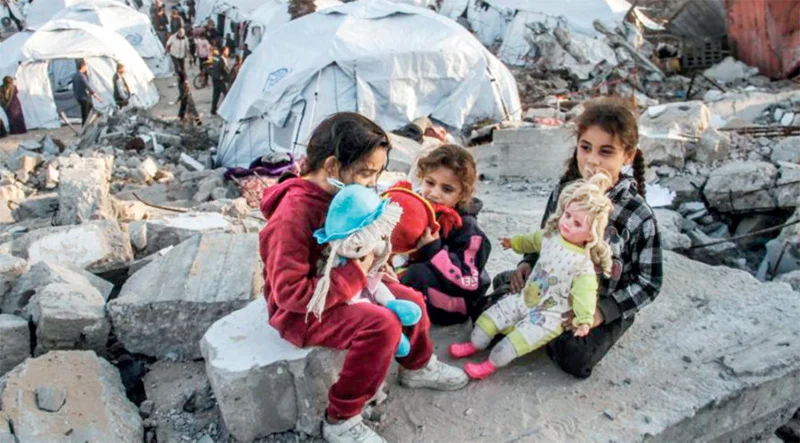
By Lynn Ockersz
Out of war’s destructive wastes,
And piles of mortal remains,
There emerge buds of promise,
Hardly into their teenage years,
That radiate childhood innocence,
And a motherhood of selflessness,
That would give fragile humans,
Their only security guarantee,
In a life rifled with uncertainties.
-

 Opinion7 days ago
Opinion7 days agoDegree is not a title!
-
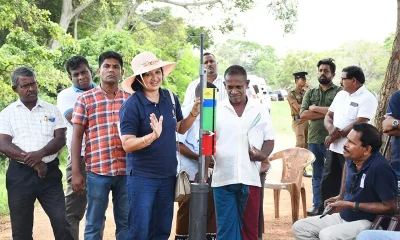
 News6 days ago
News6 days agoInnovative water management techniques revolutionising paddy cultivation in Lanka
-
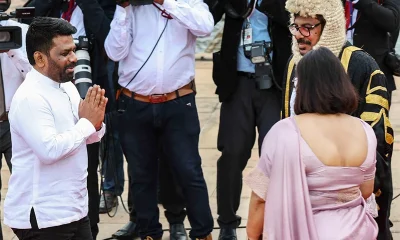
 Features5 days ago
Features5 days agoThe Degree Circus
-
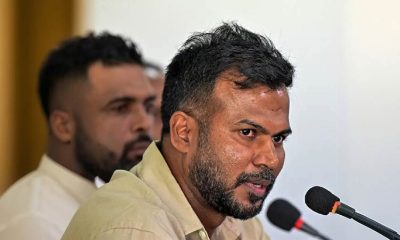
 Sports3 days ago
Sports3 days agoSri Lanka to mend fences with veterans
-

 Editorial7 days ago
Editorial7 days ago‘Compass’ under the microscope
-

 News7 days ago
News7 days agoArrest of Lankans on terrorism charges in Gujarat: Muslim grouping renews campaign for their release
-

 Opinion5 days ago
Opinion5 days agoHas ‘Compass’ lost direction?
-

 Editorial6 days ago
Editorial6 days agoA supreme irony


